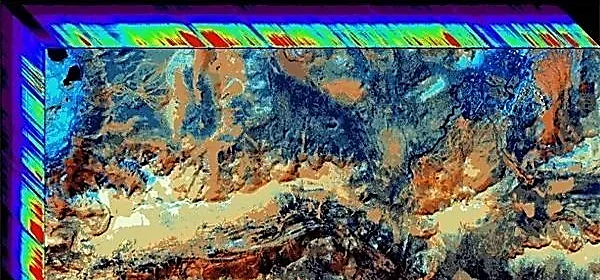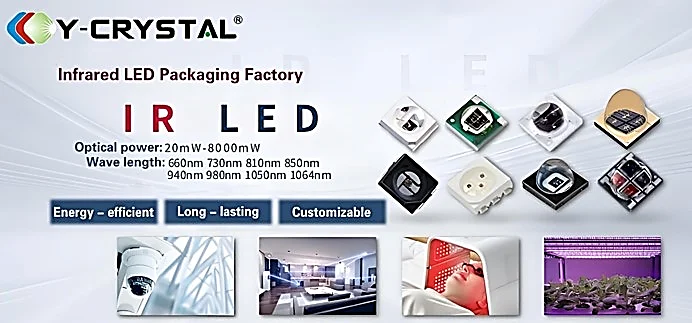Infrared spectroscopy is an analytical method based on molecular vibration and absorption characteristics. By measuring the absorption characteristics of a substance in the infrared band, its chemical composition and structural information can be obtained. In agriculture, infrared spectroscopy is mainly divided into near-infrared spectroscopy (NIR) and mid-infrared spectroscopy (MIR). Near-infrared spectroscopy is more suitable for non-destructive testing in agriculture because of its shorter wavelength and strong penetration.

Application of infrared spectroscopy in agriculture

01Soil Analysis
Used for rapid analysis of soil, including soil nutrient content, pH value, organic matter content, etc. By analyzing the spectral characteristics of the soil, farmers can formulate fertilization plans more accurately, improve land utilization and crop yields. Used for soil moisture detection to help optimize irrigation strategies.
02Crop quality testing
Infrared spectroscopy plays an important role in crop quality testing. For example, it can quickly determine the moisture, protein, fat, cellulose and other components in grains, providing a scientific basis for crop harvesting and processing. Infrared spectroscopy can also be used to detect the maturity, sugar content and moisture content of fruits, thereby determining the best harvest time. For example, near-infrared spectroscopy can be used to detect aflatoxin in corn and late blight in tomatoes.
03Crop Growth Monitoring
Infrared spectroscopy can be used to monitor the growth status of crops. By analyzing the spectral characteristics of crop leaves, the nitrogen nutrition status, water stress, and the occurrence of pests and diseases of crops can be determined. For example, the spectral characteristics of cucumber leaves can be used to estimate nitrogen content, while the spectral characteristics of cashew leaves can be used to detect diseases.
04Pest and disease detection
Infrared spectroscopy can identify whether crops are infected by pathogens, such as late blight and yellow leaf curl virus in tomatoes, by analyzing the spectral characteristics of crop leaves. In addition, infrared spectroscopy can also be used to detect defects and contamination on the surface of agricultural products, such as detecting meat and bone meal in feed.
05Agricultural product processing and quality control
Infrared spectroscopy also plays an important role in agricultural product processing and quality control. For example, it can be used to detect the chemical composition of agricultural products such as tea, coffee, and spice plants, such as protein, fat, and moisture. In addition, infrared spectroscopy can also be used to detect the origin of agricultural products and help consumers identify counterfeit and inferior products.
06Precision Agriculture and Intelligent Management
Infrared spectroscopy is increasingly being used in precision agriculture. For example, satellite hyperspectral imaging systems can be used to determine the physical properties of plant canopies, thereby optimizing planting density and fertilization strategies. Determining crop genotypes provides a potential and promising tool for transgenic breeding screening for large-scale agricultural production. In addition, infrared spectroscopy can also be used to guide intelligent fertilization and improve fertilizer utilization efficiency.

Advantages of infrared spectroscopy
1. Non-destructive: Infrared spectroscopy analysis does not require the destruction of samples, so it can be used for non-destructive testing of agricultural products without affecting their subsequent sales or processing.
2. Fast and economical: Infrared spectroscopy analysis is fast and low-cost, making it suitable for large-scale agricultural applications.
3. Environmental protection: Infrared spectroscopy analysis does not use chemical reagents, is environmentally friendly, and is suitable for direct use in farmland.
4. High precision: Infrared spectroscopy technology has high prediction accuracy, especially in the determination of components such as protein and moisture.
The application of infrared spectroscopy in agriculture has expanded from the initial analysis of agricultural product quality to soil analysis, crop growth monitoring, pest and disease detection and other fields. Its non-destructive, rapid, economical and environmentally friendly characteristics make it an indispensable tool in modern agriculture. With the continuous advancement of technology, infrared spectroscopy will play a more important role in improving agricultural productivity, ensuring food safety and promoting sustainable development.
https://www.y-crystaled.net/infrared-spectroscopy-helps-agricultural-intelligence-upgrade.html













Comments (0)